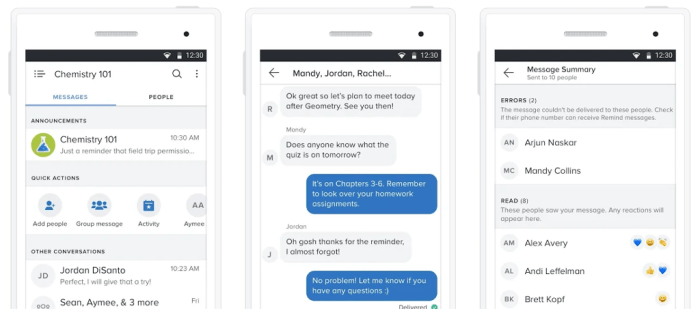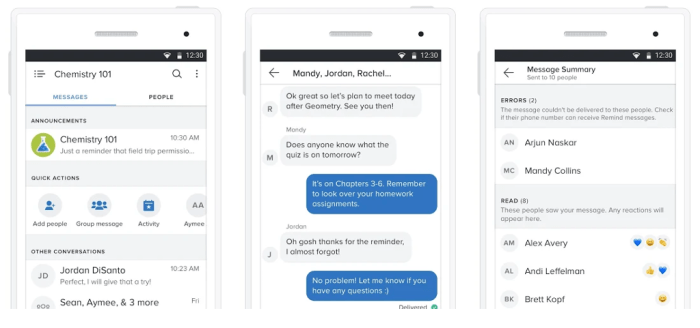Remind yourself these 7 things when you have bad day – Remind yourself these 7 things when you have a bad day. Navigating a tough day can feel overwhelming, but understanding its impact and employing effective strategies can make a significant difference. This guide explores the reasons behind bad days, offers calming techniques, and provides seven essential reminders to help you regain perspective and move forward.
This comprehensive guide delves into the science of a bad day, from identifying the root cause to practical strategies for self-soothing and reframing negative thoughts. It also looks at long-term resilience-building and provides valuable external resources for support.
Understanding the Impact of a Bad Day

A bad day can feel like a tidal wave, sweeping away our composure and leaving us feeling overwhelmed and depleted. It’s not uncommon to experience these emotional lows, and understanding how they affect us is the first step toward navigating them effectively. Recognizing the specific triggers and consequences can help us develop strategies to manage these challenging moments.A bad day isn’t a monolithic experience; it can manifest in various forms.
Stressful days, characterized by intense pressure and deadlines, can lead to anxiety and irritability. Frustrating days, marked by repeated setbacks or obstacles, can result in feelings of helplessness and resentment. Disappointing days, where expectations are not met, can trigger sadness and a sense of loss. Each type of bad day can impact our mood and behavior differently, making it crucial to identify the underlying cause to address the issue appropriately.
Negative Effects on Mood and Behavior
Bad days often trigger a cascade of negative emotions. Feelings of sadness, frustration, anger, and even hopelessness can become prominent. These emotions can influence our thoughts, leading to negative self-talk and a distorted perception of reality. The resulting emotional distress can impact our ability to concentrate, make sound decisions, and engage in healthy interactions. Physically, we might experience tension headaches, sleep disturbances, or a loss of appetite.
Types of Bad Days and Their Consequences
Different types of bad days can have distinct consequences. Stressful days, often stemming from overwhelming responsibilities, can lead to burnout and decreased productivity. Frustrating days, where repeated failures or obstacles hinder progress, can lead to feelings of demoralization and a loss of motivation. Disappointing days, marked by the absence of expected outcomes, can trigger feelings of sadness, grief, and even self-doubt.
Recognizing and Acknowledging a Bad Day
Acknowledging a bad day is a crucial first step in managing its impact. It’s important to recognize the specific emotions and thoughts associated with the day. This awareness allows for a more targeted approach to coping mechanisms and problem-solving. Avoid suppressing or denying the negative emotions, as this can often lead to further escalation of the negative feelings.
Comparison of Short-Term and Long-Term Effects of Unmanaged Bad Days
| Aspect | Short-Term Effects | Long-Term Effects |
|---|---|---|
| Mood | Temporary feelings of sadness, frustration, or anger; potential for irritability and difficulty concentrating. | Chronic low mood, increased susceptibility to depression or anxiety, potential for negative thought patterns to become ingrained. |
| Behavior | Withdrawal from social interactions, decreased productivity, impulsive decisions. | Isolation, strained relationships, difficulty maintaining healthy routines, reduced sense of self-worth. |
| Physical Health | Muscle tension, headaches, sleep disturbances, appetite changes. | Increased risk of chronic health problems, such as heart disease or weakened immune system, due to prolonged stress response. |
Acknowledging a bad day allows for proactive management and prevents the negative effects from compounding.
Identifying the Root Cause of a Bad Day
Unraveling the complexities of a bad day often hinges on understanding its underlying cause. Pinpointing the source of negativity allows for targeted solutions and prevents similar situations from recurring. Proactive identification of triggers, whether interpersonal or internal, empowers you to navigate challenges more effectively. This process is crucial in moving past a bad day and fostering resilience.A bad day, while unpleasant, can be a valuable learning opportunity.
By examining the events and emotions associated with a negative experience, we can gain insights into patterns and triggers. This understanding is essential for developing strategies to manage stress and improve future interactions. This proactive approach equips you with tools to prevent similar negative experiences in the future.
Potential Triggers for Negative Experiences
Understanding potential triggers is the first step in identifying the root cause of a bad day. These triggers can stem from various sources, including interpersonal conflicts, personal setbacks, or unforeseen circumstances. Recognizing these triggers allows for targeted strategies to mitigate their impact.
- Interpersonal Conflicts: Disagreements with colleagues, friends, or family members can significantly impact mood and productivity. These conflicts can stem from misunderstandings, differing perspectives, or unmet expectations. Addressing these issues directly and constructively can prevent future conflicts.
- Personal Setbacks: Challenges such as unexpected delays, financial difficulties, or health concerns can lead to feelings of frustration and negativity. Acknowledging these setbacks and developing coping mechanisms is essential for maintaining emotional well-being.
- Unforeseen Circumstances: Unexpected events like traffic jams, technical malfunctions, or sudden changes in plans can disrupt daily routines and contribute to a negative experience. While these events are often beyond our control, understanding their potential impact allows for more effective stress management.
Strategies for Pinpointing the Core Issue(s)
Developing effective strategies for identifying the core issues behind a bad day involves a systematic approach. The following methods provide a framework for analyzing events and pinpointing the underlying causes.
- Detailed Event Recall: Begin by meticulously recalling the events of the day, focusing on specific details. Note the sequence of events, the emotions associated with each, and any interactions with others. This detailed account forms the foundation for understanding the day’s progression.
- Emotional Analysis: Pay close attention to your emotional responses throughout the day. Identify patterns in your feelings and link them to specific events or interactions. Recognizing emotional triggers helps understand their impact on your overall experience.
- External Factor Evaluation: Consider external factors that may have contributed to the negative experience. Were there any unforeseen circumstances, or unexpected events that impacted your well-being? This external evaluation can provide insights into the context of the bad day.
Differentiating Between Temporary Setbacks and Significant Problems
Distinguishing between temporary setbacks and more significant underlying issues is crucial for effective problem-solving. A temporary setback might involve a minor conflict or a minor delay, whereas a significant problem could indicate a deeper issue needing more comprehensive attention.
- Temporary Setbacks: These setbacks are often isolated incidents that don’t significantly impact your overall well-being. These might involve minor disagreements, short delays, or minor inconveniences.
- Significant Problems: These problems can be recurring patterns or events that indicate deeper issues. For example, chronic interpersonal conflicts, consistent financial stress, or recurring health concerns are signs of more significant problems requiring more substantial intervention.
A Simple Framework for Analyzing a Bad Day
This framework offers a structured approach to analyzing the events of a bad day. It provides a systematic way to identify potential triggers, pinpoint the core issue(s), and distinguish between temporary setbacks and more significant problems.
| Event | Emotion | Impact | Potential Trigger |
|---|---|---|---|
| Late train | Frustration | Missed meeting | Public transportation issues |
| Argument with colleague | Anger | Strained relationship | Differing opinions |
Strategies for Self-Soothing and Reframing
Navigating a bad day can feel overwhelming. It’s crucial to have tools and strategies to manage the emotional turmoil and shift your perspective towards more positive outcomes. These techniques are designed to help you regain control and find a path towards a more manageable and less stressful experience.Understanding that a bad day is a temporary state, and that it’s possible to move through it effectively, is key.
Employing strategies for self-soothing and reframing can help you navigate the challenging emotions and potentially turn a negative experience into a learning opportunity.
Relaxation Techniques for Emotional Regulation
Effective self-soothing often begins with calming the body and mind. Relaxation techniques provide a pathway to reduce stress hormones and promote a sense of calm. Deep breathing exercises, for example, can immediately bring the body into a more relaxed state.
- Deep Breathing Exercises: Incorporating deep, slow breaths can significantly lower stress levels. Practice inhaling deeply through your nose, holding for a few seconds, and exhaling slowly through your mouth. Repeat this process several times to notice the calming effect on your mind and body. A simple example involves inhaling for four seconds, holding for four seconds, exhaling for four seconds, and holding for four seconds.
This pattern can be repeated for several minutes.
- Mindfulness Meditation: Mindfulness practices focus on being present in the current moment without judgment. By focusing on your breath, sensations, or bodily awareness, you can detach from the negative thoughts and feelings associated with a bad day. Guided meditations or mindfulness apps can assist in establishing this practice.
- Progressive Muscle Relaxation: This technique involves systematically tensing and releasing different muscle groups in your body. By consciously relaxing each muscle group, you can reduce physical tension, which often accompanies emotional stress.
Reframing Negative Thoughts
Negative thoughts can escalate the intensity of a bad day. Reframing these thoughts involves consciously challenging and changing their perspective. It’s about identifying the negative thought patterns and replacing them with more realistic and positive ones.
- Identifying Negative Thoughts: Actively observe your thoughts during a challenging time. What specific negative thoughts are you having? Be specific and identify the exact phrases and ideas.
- Challenging Negative Thoughts: Once identified, critically examine the evidence supporting the negative thoughts. Are these thoughts based on facts, or are they assumptions? Consider alternative explanations or perspectives. For example, if you think, “I’m going to fail this presentation,” ask yourself, “What evidence supports this? What are the chances of failure?
What steps can I take to improve my chances of success?”
- Replacing with Positive Thoughts: Develop positive and realistic alternative thoughts. Focus on your strengths, past successes, and potential solutions. For example, instead of “I’m going to fail this presentation,” consider “I have prepared well for this presentation, and I can handle the challenges. I’m confident in my abilities and my preparation.”
Shifting Focus to Solutions
When confronted with a challenging situation, it’s easy to get bogged down in the problem. Shifting your focus to potential solutions can provide a sense of control and hope.
- Brainstorming Solutions: Generate a list of potential solutions to the problem. Don’t limit yourself; just write down any ideas that come to mind, no matter how outlandish they might seem.
- Prioritizing Solutions: Once you have a list of potential solutions, prioritize them based on their feasibility, effectiveness, and potential impact.
- Taking Action: Select a solution and take a concrete step toward implementing it. Even small steps can make a difference.
The Seven Reminders
Navigating a bad day can feel overwhelming. It’s easy to get caught in a cycle of negativity and self-criticism. But remember, a bad day doesn’t define you. Having tools to reframe your perspective can be incredibly helpful. These seven reminders are designed to provide comfort and perspective during challenging moments.These reminders are not rigid rules, but rather flexible tools.
Having a rough day? Remind yourself of those 7 things that help you get through. Sometimes, though, a bad day needs more than just internal reminders. Exploring different ways to let go and feel relieved can be incredibly helpful, like the 40 strategies outlined in this article, 40 ways let and feel relieved. Ultimately, though, remembering those 7 things is your key to getting back on track.
Keep those tools handy for when the next tough day comes along.
Tailor them to your individual situation and needs. Perhaps one resonates more deeply on a particular day, while another might be more helpful during a specific type of challenge. The key is to have these resources readily available, and to use them when you need them.
Seven Reminders for a Better Day
A bad day can feel isolating, but remember you are not alone. These seven reminders offer different perspectives, helping you navigate challenging moments with more resilience and understanding.
| Reminder | Explanation | Example Application |
|---|---|---|
| This too shall pass. | Acknowledge that difficult moments are temporary. This reminder helps ground you in the present, recognizing that the feeling will eventually subside. | “I’m feeling frustrated right now, but I know this feeling won’t last forever. I can focus on getting through this moment.” |
| Focus on your strengths. | Identify and appreciate your positive attributes. Remind yourself of your capabilities and resilience. | “I’m struggling with this project, but I’m a creative problem-solver, and I’ve overcome challenges before. I can use my strengths to navigate this.” |
| Practice self-compassion. | Treat yourself with the same kindness and understanding you would offer a friend facing a similar situation. Recognize that mistakes are part of the learning process. | “It’s okay to make mistakes. I’m learning and growing, and I’ll handle this better next time.” |
| Seek support from others. | Don’t hesitate to reach out to a trusted friend, family member, or support group. Sharing your feelings can offer a different perspective and a sense of connection. | “I’m feeling overwhelmed by this situation. I’m going to call my friend Sarah, who always listens and offers great advice.” |
| Focus on the present moment. | Avoid dwelling on the past or worrying about the future. Engage with the current situation, acknowledging your feelings without judgment. | “Instead of focusing on the deadline stress, I will focus on the task in front of me right now. I will complete this task and then worry about the next step.” |
| Acknowledge your emotions. | Allow yourself to feel your emotions without judgment. Validating your feelings is a crucial step toward processing them and moving forward. | “I’m feeling angry right now, and that’s okay. I can acknowledge this emotion without letting it control me.” |
| Remember your past successes. | Reflect on times you’ve overcome challenges. This reminder boosts confidence and reminds you of your ability to persevere. | “I’ve tackled tough projects before, and I’ve always found a way to get through them. I have the resources and strength to overcome this challenge.” |
Implementing the Reminders
Turning a bad day into a manageable one often hinges on how effectively you can apply the coping mechanisms you’ve identified. This section delves into practical ways to integrate the seven reminders into your daily life, transforming them from abstract concepts into tangible tools for navigating challenging situations. We’ll explore how these reminders can be applied in different contexts and how to make them a routine part of your self-care toolkit.
Practical Application in Scenarios
The seven reminders are not static; they are adaptable tools for addressing various life situations. Their effectiveness stems from their applicability to a wide range of experiences, from professional stress to personal relationships. Understanding how to tailor these reminders to specific circumstances is key to maximizing their impact.
Having a rough day? Remind yourself of those crucial 7 things. But, sometimes, a little boost in productivity can make a huge difference. Small changes, like those outlined in this helpful article about 9 small changes you never realized supercharge your productivity , can really impact your overall well-being. So, remember those 7 things, and you’ll be feeling much better, ready to tackle the day!
- Work Stress: When facing overwhelming deadlines or interpersonal conflicts at work, the reminders can be instrumental in regaining perspective. Remembering that your worth isn’t defined by your productivity during a stressful period, and that your actions are often responses to external pressures, can help you detach from the immediate stressor. Acknowledging the limitations of the situation, and that you’re doing the best you can in that moment, can offer a much-needed sense of calm.
Focusing on the positive outcomes of your efforts and your personal strengths can provide a much-needed boost during challenging periods.
- Relationship Issues: Difficulties in relationships often trigger strong emotional responses. The reminders can offer a grounding force in these situations. Recognizing that your partner’s actions are often influenced by their own experiences, and that your own reactions contribute to the dynamic, can help de-escalate conflict. Understanding that communication breakdowns are a common occurrence and that seeking clarity in the conversation can lead to greater understanding and empathy can help you address the issue constructively.
- Personal Challenges: Facing personal setbacks, whether they’re related to health, finances, or other areas of life, can be profoundly unsettling. Reminders about your resilience and ability to adapt can provide a source of strength. Remembering that setbacks are often opportunities for growth and that you’ve overcome similar challenges in the past can help reframe the situation. Focus on the steps you can take now to move forward, and that you are worthy of support, both from yourself and others, to navigate through the challenge.
Incorporating Reminders into Daily Routines
Integrating the seven reminders into daily routines is not about creating a rigid schedule; it’s about weaving these insights into your everyday interactions. Making them part of your self-care regimen will provide a continuous source of support.
- Morning Reflection: Start your day by reflecting on the reminders. Taking a few minutes to acknowledge your strengths and resilience can set a positive tone for the day. You can jot down a few key points in a notebook or simply meditate on them.
- Journaling: Use a journal to record situations where you applied the reminders. This practice helps you track your progress and identify patterns. Reflecting on how the reminders helped you navigate a difficult situation can reinforce their value.
- Mindfulness Practices: Incorporate mindfulness exercises, such as deep breathing or meditation, into your routine. These practices can help you stay grounded and present, making it easier to apply the reminders when faced with stress.
Flowchart for Effective Reminder Use
This flowchart Artikels the steps to use the reminders effectively in any situation:
| Step | Action |
|---|---|
| 1 | Identify the Situation: Recognize the specific circumstances causing distress. |
| 2 | Recall the Reminders: Actively bring to mind the seven reminders. |
| 3 | Apply Reminders to the Situation: Consider how each reminder relates to the current challenge. |
| 4 | Reflect and Reframe: Evaluate the situation from a new perspective, focusing on strengths and coping mechanisms. |
| 5 | Self-Soothing Techniques: Implement relaxation techniques to manage emotions. |
| 6 | Seek Support (if needed): Reach out to a friend, family member, or professional for assistance. |
Examples of Integration
The reminders can be applied across a wide range of scenarios.
- Example 1 (Work): Facing a critical deadline with mounting pressure, you recall that your previous successes demonstrate your ability to handle challenges. You remind yourself that your efforts are valuable and that you have the skills to succeed. Taking a break and focusing on deep breathing techniques helps manage stress. This can improve your focus and problem-solving abilities, ultimately leading to a more positive outcome.
- Example 2 (Relationship): During a disagreement with a partner, you remember that both you and your partner bring different perspectives to the table. Understanding that your actions often stem from your personal experiences and that seeking clarity can foster empathy and resolution helps de-escalate the situation. Applying active listening techniques and acknowledging your partner’s feelings can contribute to a more constructive dialogue.
Long-Term Strategies for Preventing Bad Days
Turning a bad day into a learning opportunity and a stepping stone toward a more resilient future requires a proactive approach. By building emotional regulation skills and fostering a supportive environment, we can significantly reduce the frequency and intensity of negative experiences. This involves understanding our triggers, developing coping mechanisms, and cultivating a mindset that empowers us to navigate challenges effectively.Proactive measures to mitigate the impact of future bad days extend beyond simply reacting to them.
It involves a conscious effort to understand our emotional landscape and build the necessary tools to navigate difficult situations with grace and resilience. This process is not about eliminating negative experiences entirely, but about transforming our relationship with them.
Building Resilience and Emotional Regulation
Developing resilience and emotional regulation is a crucial aspect of preventing bad days. This involves identifying and understanding your emotional triggers, developing healthy coping mechanisms, and practicing self-compassion. Learning to recognize early warning signs of stress or overwhelm, and having a toolkit of strategies to manage these feelings, are key components of building resilience.
- Mindfulness and Meditation: Regular mindfulness and meditation practices can cultivate a heightened awareness of your thoughts and emotions. This awareness allows you to observe negative feelings without judgment, promoting emotional regulation and a more balanced perspective. For instance, daily meditation sessions, even for a few minutes, can equip you with the ability to observe stressful thoughts without being consumed by them.
- Healthy Lifestyle Choices: Prioritizing physical well-being is essential for emotional well-being. A balanced diet, regular exercise, sufficient sleep, and stress-reducing activities like spending time in nature or engaging in hobbies can contribute significantly to a more stable emotional state. For example, getting enough sleep helps regulate mood and improve focus, reducing the likelihood of negative reactions to stressful situations.
Having a rough day? Remind yourself of those 7 things that help you get through. Sometimes, a change of career path is needed, and highlighting transferable skills on your resume is key. Check out this article for some ideas on 10 great skills to include on your resume when changing careers – these skills can also be applied to navigating a challenging day.
But no matter what, focusing on those 7 things will always get you back on track.
- Cognitive Behavioral Techniques: Techniques like cognitive restructuring and reframing negative thoughts can help challenge unhelpful thought patterns and promote a more positive outlook. By identifying negative thought patterns and replacing them with more realistic and constructive ones, you can effectively mitigate the impact of stressful situations.
Proactive Measures to Prevent Future Bad Days
Taking proactive steps to prevent bad days involves addressing potential stressors and creating a supportive environment. This includes identifying potential triggers and developing strategies to manage them before they escalate.
- Identifying and Managing Potential Triggers: Recognize the situations, people, or internal factors that often contribute to bad days. Developing coping mechanisms for these triggers can significantly reduce their impact. For example, if a particular coworker’s behavior frequently triggers stress, strategize how to manage interactions with them, potentially with the help of your manager.
- Time Management and Prioritization: Effective time management and prioritization skills can help reduce feelings of overwhelm and stress. This involves planning your schedule, setting realistic goals, and delegating tasks when possible. For instance, breaking down large projects into smaller, manageable steps reduces the feeling of being overwhelmed, thus preventing bad days.
- Setting Realistic Expectations: Setting realistic expectations and boundaries can prevent disappointment and frustration. This includes understanding your limits and communicating them effectively to others. For instance, acknowledging your own limitations in time management can help prevent taking on more tasks than you can realistically handle.
Developing a Support Network
Building a strong support network is a critical element of preventing bad days. Having individuals you can confide in and who can offer support during challenging times can significantly impact your overall well-being.
- Building Meaningful Relationships: Nurture meaningful relationships with friends, family, or mentors. These connections provide emotional support and a sense of belonging. For instance, connecting with friends for regular social activities or setting aside time for family dinners can help cultivate a supportive environment.
- Seeking Professional Help: Don’t hesitate to seek professional help from a therapist or counselor if needed. A mental health professional can provide guidance and support in developing coping mechanisms and strategies for managing stress and difficult emotions. For example, if you consistently struggle with managing stress, seeking professional support can be an invaluable resource.
Cultivating Positive Self-Talk and Affirmations
Positive self-talk and affirmations can significantly impact your outlook and ability to manage stress. By replacing negative thoughts with positive and empowering statements, you can foster a more resilient mindset.
- Practicing Positive Self-Talk: Consciously replace negative self-talk with positive and encouraging statements. This includes reframing negative thoughts into more constructive and realistic perspectives. For example, instead of thinking “I’m not good enough,” you might replace it with “I am capable and worthy of success.”
- Creating Affirmations: Create personalized affirmations that reflect your strengths and values. Repeating these affirmations regularly can help build self-confidence and a positive self-image. For example, “I am capable of overcoming challenges,” or “I am worthy of love and happiness.”
Visualization and Mental Imagery

Visualization, a powerful tool for managing stress and cultivating positive feelings, involves creating mental images that evoke specific emotions and sensations. By engaging in this practice, we can reframe negative thoughts and develop a sense of resilience in challenging situations. This technique taps into the subconscious mind, allowing us to build mental strength and comfort, and can be a valuable addition to our toolkit for navigating difficult days.Effective visualization requires conscious effort and practice.
It’s not simply about daydreaming; it’s about actively shaping mental images to evoke desired feelings. This process can be highly personalized, allowing individuals to tailor their visualizations to their unique needs and preferences.
Creating Mental Images for Comfort and Strength
Visualization involves actively creating detailed mental images. To cultivate feelings of comfort and strength, focus on sensory details. Imagine a calming environment, such as a serene beach or a cozy fireplace. Notice the textures, colors, and sounds. Feel the warmth of the sun on your skin or the soft embrace of a blanket.
Include elements that evoke feelings of security and relaxation. By engaging all your senses in this mental exercise, you anchor these positive feelings to specific mental images.
Utilizing Visualization to Reframe Negative Thoughts, Remind yourself these 7 things when you have bad day
Visualization can be a powerful tool for reframing negative thoughts. When faced with a negative thought, visualize a contrasting positive image. For example, if you’re feeling overwhelmed by a challenging task, imagine yourself successfully completing it, feeling confident and capable. Visualize the satisfaction and accomplishment associated with overcoming the obstacle. By associating the negative thought with a positive image, you gradually shift your perception and build resilience.
Positive Visualization Examples for Difficult Situations
Effective visualizations are tailored to the specific situation. Here are some examples of positive visualizations to manage difficult situations:
- Public Speaking: Visualize yourself confidently standing before an audience, connecting with them, and delivering your message with clarity and poise. See yourself succeeding, imagine a supportive environment, and feel the positive energy from the audience.
- Important Meeting: Visualize yourself entering the meeting room, feeling calm and prepared. Picture yourself articulating your ideas clearly and concisely, gaining understanding and respect from the other participants. See yourself confidently presenting solutions and engaging in constructive dialogue.
- Exam Situation: Visualize yourself calmly reviewing the material, feeling prepared and confident. Picture yourself accurately answering questions, remembering key concepts, and feeling a sense of accomplishment as you complete the exam. Visualize success.
By practicing visualization techniques regularly, you can build mental resilience and cultivate positive feelings, which can significantly impact your ability to manage challenging situations and navigate difficult days.
External Resources and Support: Remind Yourself These 7 Things When You Have Bad Day
Navigating a bad day can feel isolating. Recognizing that you’re not alone and seeking help is a sign of strength, not weakness. Understanding the availability of external resources can provide a crucial safety net during challenging times. This section explores the various support systems available to help you manage negative emotions and build resilience.
Support Groups
Support groups offer a unique environment for connecting with others who share similar experiences. The shared understanding and empathy within these groups can be invaluable in processing difficult emotions and developing coping mechanisms. These groups provide a safe space for open communication, reducing feelings of isolation and fostering a sense of belonging. You’ll find people who understand the unique struggles of navigating challenging days, providing a space to vent, share experiences, and gain valuable insights.
- Many mental health organizations and community centers host support groups for various conditions. Look for groups focused on stress management, anxiety, depression, or other relevant issues.
- Online support groups offer accessibility and anonymity for those who may feel more comfortable connecting virtually. These platforms allow for participation from individuals across different locations and time zones.
- Peer-to-peer support groups can be highly effective. The shared experiences and practical advice from individuals who have navigated similar challenges can be incredibly empowering.
Therapists and Counselors
Professional therapists and counselors are trained to provide support and guidance in navigating emotional challenges. They offer a safe and confidential space to explore the root causes of negative emotions and develop strategies for managing them effectively. Seeking professional help is a proactive step toward improving mental well-being and building resilience. Therapists can help you identify patterns, develop coping mechanisms, and learn healthy ways to manage stress.
- Licensed therapists and counselors can offer personalized guidance and support based on individual needs and circumstances.
- Therapy can address specific issues such as anxiety, depression, trauma, or relationship difficulties. It can help develop healthy communication patterns and conflict resolution skills.
- Therapy provides a structured approach to understanding and managing emotions. It empowers you to build self-awareness and develop strategies for handling challenging situations.
Crisis Hotlines
Crisis hotlines provide immediate support during times of emotional distress. They offer a confidential and accessible resource for those experiencing overwhelming emotions, suicidal thoughts, or urgent needs. These resources are crucial in preventing escalation and connecting individuals with immediate support.
- Crisis hotlines offer immediate support and guidance during times of crisis.
- They provide a safe space to express feelings and receive immediate support.
- Trained counselors are available 24/7 to provide support and connect individuals with appropriate resources.
Potential Resources
| Resource | Contact Information |
|---|---|
| National Alliance on Mental Illness (NAMI) | (800) 950-NAMI (6264) |
| The Trevor Project | (866) 488-7386 |
| Crisis Text Line | Text HOME to 741741 |
| The Jed Foundation | (800) 656-4673 |
Importance of Seeking Professional Help
Seeking professional help is a courageous act that demonstrates a commitment to well-being. It acknowledges the need for support when faced with overwhelming emotions or challenges. It’s a sign of strength to recognize that professional guidance can facilitate significant positive changes in one’s life.
Conclusion
In conclusion, understanding and effectively managing bad days is a crucial skill for navigating life’s challenges. By recognizing the impact, identifying triggers, and employing the seven reminders, you can equip yourself with the tools to handle difficult situations more effectively and build resilience. Remember, seeking support and utilizing external resources is also an important aspect of this journey. With consistent practice, you can transform bad days into opportunities for growth and personal development.











